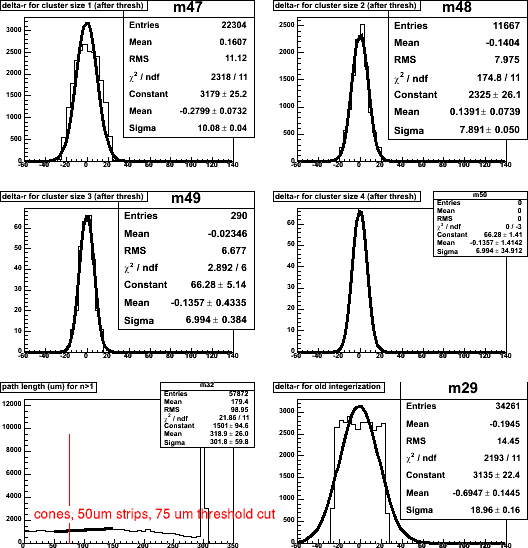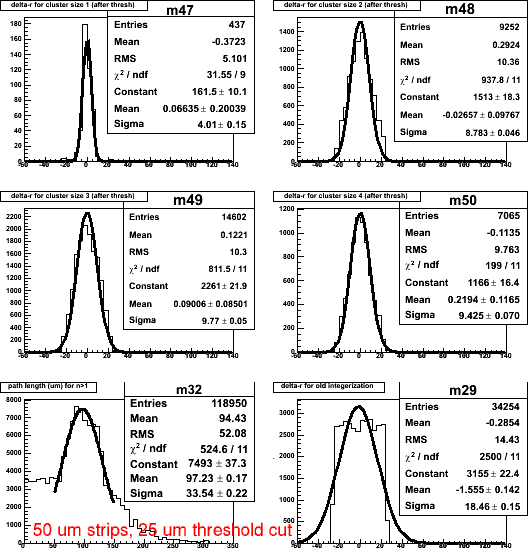Bla
| Threshold | |||||
|---|---|---|---|---|---|
| 25 | 34 | 50 | 75 | 125 | |
| mean cluster size | 1.34 | 1.13 | |||
| Resolution | 9.33 | 10.2 | |||
| Picture | 50x25 | 50x34 | 50x50 | 50x75 | 50x125 |
| Strip width | ||||
|---|---|---|---|---|
| 50 | 75 | 100 | 200 | |
| Threshold | 25 | 34 | 50 | 75 |
| mean cluster size | ||||
| Resolution | ||||
| strip/sqrt(12) | ||||
| Picture | 50x25 | 75x34 | 100x50 | 200x75 |

| cones.
Bla
| 
| |||||||||||||||||||||||||||||||||||||||||||||||||||||||||||||||||
| | ||||||||||||||||||||||||||||||||||||||||||||||||||||||||||||||||||
| Thresholds
We have to ignore cells where the signal is below some threshold. A particle traversing 300 um of silicon typically generates 24000 electrons. Setting the threshold at 2000 electrons, about 10% of this is an equivalent minimum path length of 25 microns. Strips that are traversed by less than the threshold path are not considered 'on'. | 
|
| Applying the threshold cut is expected to somewhat improve the
resolution, and this is what we see:
For example, for the most prevalent cluster size of 3, sigma goes from 9.876 to 8.633, a 15% improvement. The weighted mean is now 8.92 um.
Note that the threshold cut (25) is at 1/4 of the most probable path length (~100). | 
|
| Increasing the threshold cut is expected to make the cluster size smaller by discarding more of the first and last hits in a cluster. As expected, the number of clusters of size 1 goes up, the mean cluster size goes down, the ratio of the 2 most frequent cluster sizes (2,3) goes down, but the resolution (for simplicity, the sigma of the most popular cluster size) doesn't suffer much. | |
| Increasing the strip size while keeping the threshold at approximately 1/4 of the most frequent path length is expected to decrease cluster size and thus data volume. The resolution (defined as above) suffers accordingly. | |